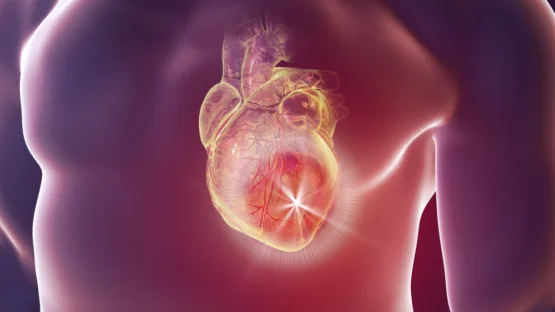Research published in Cell Stem Cell has described how previously unmodified animals have been given regenerative abilities akin to those of zebrafish, restoring their heart muscle after injury.
A TREE of life
This study is introduced with a discussion of gene therapy as a field, noting clinical approval for gene therapies against multiple genetic diseases [1]. However, most current applications are relevant to cases when it is desirable to express the new genes all the time, and there are conditions in which this is not the case [2].
Effective regeneration requires selective genetic expression. The genes responsible for regeneration need to be expressed when, and only when, there is an injury to regenerate from; otherwise, tumors might be the result. In zebrafish, these genes are controlled by tissue regeneration enhancer elements (TREEs), which selectively respond to injury [3].
As heart tissue does not normally regenerate in adult mammals for multiple genetic reasons stopping cell division [4], and certain transgenic animals have been shown to regenerate it [5], it was chosen as the basis for these experiments.
An adenovirus to match inborn expression
For the first part of their experiment, the researchers genetically engineered mouse models to express one of three different TREEs throughout life, providing visual indicators of injury response. While not all TREEs applied to all injuries, the TREEs had selective effects: the visual indicators only appeared in the injured mice.
The researchers then applied a similar adeno-associated virus (AAV) vector containing TREEs and a visual indicator to wild-type mice, then examining their hearts with immunofluorescence after injury. The results were the same: in sham-injured and uninjured mice, there was no gene expression, but in the injured mice, the indicator was clearly visible. Roughly 45-65% of targeted cells were affected, and full-length TREEs were more effective than shortened versions.
These results were seen whether the injection was given before or immediately after the injury. Only one of the TREEs was still effective when the injection was delayed by a week or a month.
The effects were recapitulated in pigs. While affecting whole pigs through the bloostream would have required a substantial amount of virus, directly injecting the pigs’ hearts provided similar results to the mice: the indicators were visible only at the injury sites.
Improvements in physical function
The final experiments involved the overexpression of the Yap transcriptional cofactor, which causes rapid cell growth and division. Without a TREE, genetically modifying animals to express Yap in the heart kills them within days due to cardiac muscle overgrowth [6].
With a TREE, however, the results were much different. Choosing the TREE candidate with the most potential, the researchers created an AAV that connected it to Yap expression. Yap was only expressed during injuries and only at injury sites, showing a lack of side effects, and animals injected with this AAV exhibited considerably more cell cycling in the injured sites than controls did.
The researchers then put this technique to the true test: restoration of function. Yap injection restored core metrics of cardiac function, including ejection fraction and left ventricular wall thickness, roughly to the levels of sham-injured animals. This occurred whether the injection was given before or immediately after the injury, and it provided notable improvements in function over an injured control group. However, the formation of fibrotic scar tissue seemed to be unaffected by this approach.
Conclusion
Major tissue regeneration has always been a goal of people interested in living longer, and this is a proof-of-principle study showing that it is a plausible and effective approach in animal models. While this is still not a human clinical trial of a gene therapy that gives human beings some ability to regenerate damaged cardiac muscle, it is a significant step towards one.
If this technique can be proven safe and effective, it may become the standard of care to treat heart attacks or other conditions that cause significant tissue damage. As the researchers touch upon, it may also be possible to simulate short-term injuries and cause cellular regeneration to replace long-term losses. Giving people zebrafish-like regenerative powers is stepping out of the world of science fiction and into the world of medicine.
Literature
[1] Phase, I., & IIPhase II, I. P. (2021). The clinical landscape for AAV gene therapies. nature reviews| Drug DIScoVery, 20, 173.
[2] Matagne, V., Borloz, E., Ehinger, Y., Saidi, L., Villard, L., & Roux, J. C. (2021). Severe offtarget effects following intravenous delivery of AAV9-MECP2 in a female mouse model of Rett syndrome. Neurobiology of Disease, 149, 105235.
[3] Kang, J., Hu, J., Karra, R., Dickson, A. L., Tornini, V. A., Nachtrab, G., … & Poss, K. D. (2016). Modulation of tissue repair by regeneration enhancer elements. Nature, 532(7598), 201-206.
[4] Puente, B. N., Kimura, W., Muralidhar, S. A., Moon, J., Amatruda, J. F., Phelps, K. L., … & Sadek, H. A. (2014). The oxygen-rich postnatal environment induces cardiomyocyte cell-cycle arrest through DNA damage response. Cell, 157(3), 565-579.
[5] Chen, Y., Lüttmann, F. F., Schoger, E., Schöler, H. R., Zelarayán, L. C., Kim, K. P., … & Braun, T. (2021). Reversible reprogramming of cardiomyocytes to a fetal state drives heart regeneration in mice. Science, 373(6562), 1537-1540.
[6] Monroe, T. O., Hill, M. C., Morikawa, Y., Leach, J. P., Heallen, T., Cao, S., … & Martin, J. F. (2019). YAP partially reprograms chromatin accessibility to directly induce adult cardiogenesis in vivo. Developmental cell, 48(6), 765-779.





